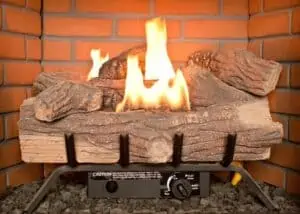A gas fireplace’s pilot light lighting procedure.
The pilot light of a gas fireplace is an essential component that must be lit before the main burner can be ignited. A properly lit pilot light is crucial for the safe and efficient operation of your gas fireplace. In this article, we’ll discuss the gas fireplace pilot light lighting procedure to help you ensure safe and effective use of your fireplace.
(Looking For “gas fireplace remote repair“? Contact us today?)

-
Locate the Pilot Light.
The pilot light is typically located near the bottom of the fireplace, near the gas supply line. Check the owner’s manual or manufacturer’s instructions to locate the pilot light on your specific model of gas fireplace.
-
Turn Off the Fireplace.
Before lighting the pilot light, make sure the fireplace is turned off. The control knob or switch should be in the “off” position, and the gas valve should be closed.
-
Clear the Area Around the Pilot Light.
Clear the area around the pilot light of any debris or dust that may have accumulated. This will ensure a clear and unobstructed path for the gas flow.
-
Depress the Control Knob.
To start the pilot light, depress the control knob and hold it in for a few seconds. This will allow gas to flow to the pilot light.
-
Ignite the Pilot Light.
With the control knob still depressed, use a long lighter or match to ignite the pilot light. Hold the flame near the pilot light until it ignites.
-
Continue Holding the Control Knob.
After the pilot light ignites, continue holding the control knob for an additional 30 seconds to a minute. This will allow the thermocouple to heat up and create a signal that the pilot light is lit.
-
Release the Control Knob.
After the thermocouple is heated, release the control knob. The pilot light should remain lit. If the pilot light goes out, repeat the lighting procedure.
-
Check the Flame.
After the pilot light is lit, check the flame. The flame should be steady and blue with a small yellow tip. A yellow or orange flame may indicate a problem with the gas flow or burner.
-
Turn on the Fireplace.
Once the pilot light is lit and the flame is steady, turn on the fireplace using the control knob or switch. The main burner should ignite automatically.
-
Adjust the Flame.
Adjust the flame to your desired level using the control knob or switch. Be careful not to set the flame too high, as this can be dangerous and may cause overheating.
-
Regular Maintenance.
Regular maintenance of your gas fireplace can help ensure safe and efficient use. Hire a professional to inspect and clean the fireplace at least once a year. They can also check for gas leaks and make any necessary repairs.
Final Thoughts:
The pilot light of a gas fireplace is a crucial component that must be lit before the main burner can be ignited. Proper lighting of the pilot light is essential for safe and efficient use of your gas fireplace. Always follow the manufacturer’s instructions and safety precautions when lighting your pilot light. If you’re unsure about any of the steps or have questions about your specific model, consult the manufacturer’s instructions or contact a professional.

